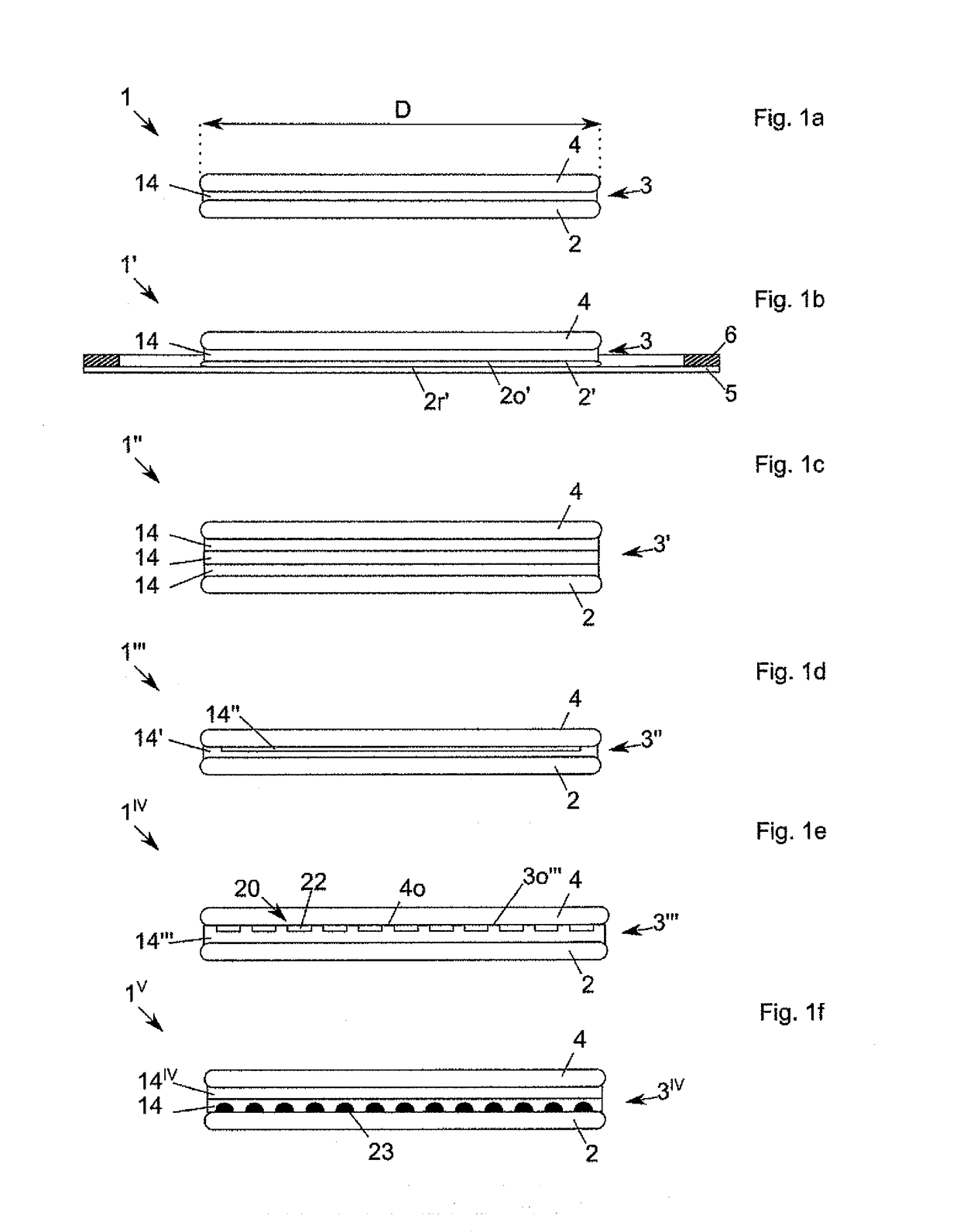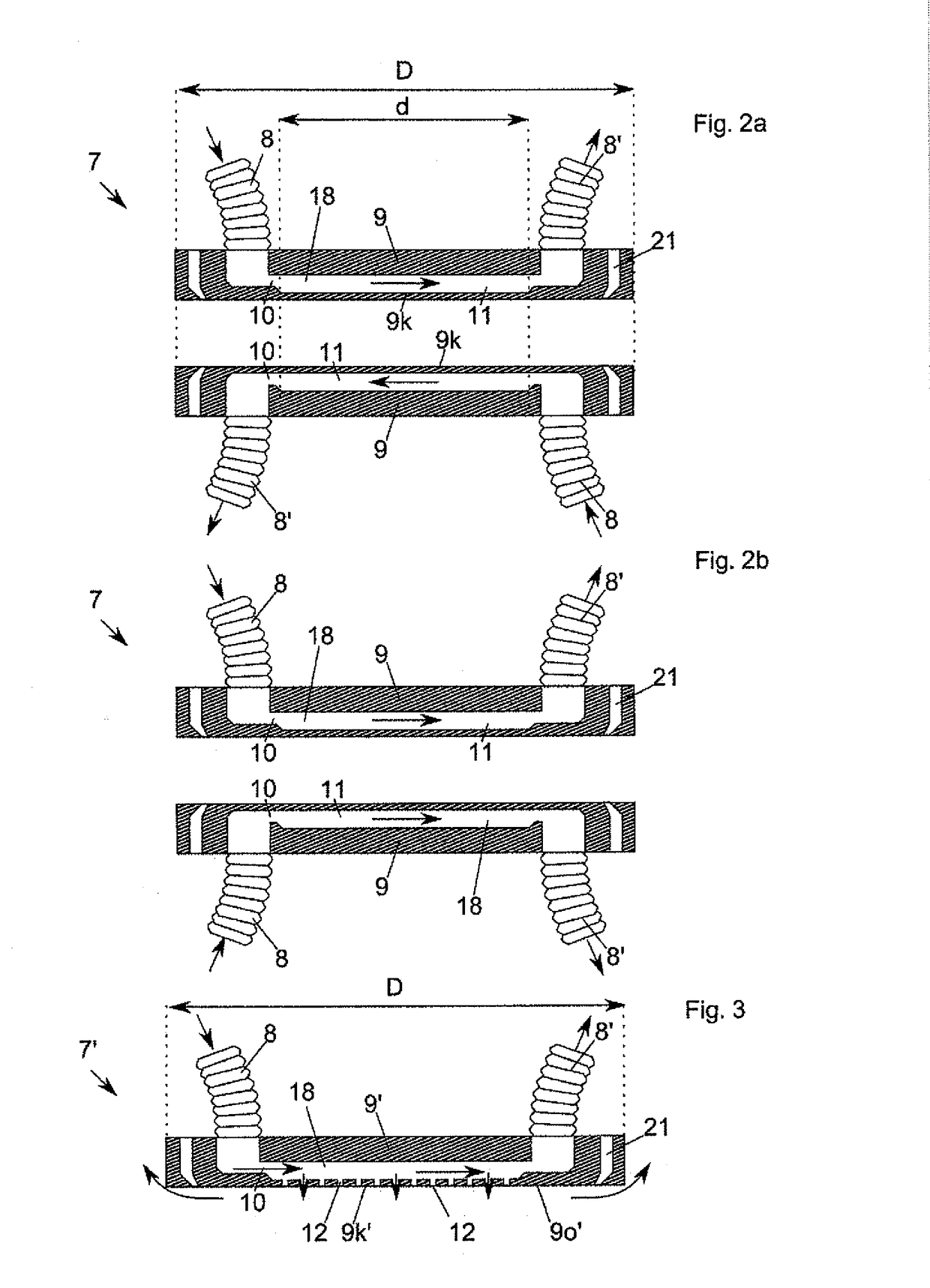Sample holder, device and method for detaching of a first substrate
a substrate and sample technology, applied in the direction of lamination, electrical equipment, applications, etc., can solve the problem of least partial adverse effect on the properties of the interconnect layer and/or the substrate or components, and achieve the effects of increasing the debonding rate, increasing the throughput, and improving economic efficiency
- Summary
- Abstract
- Description
- Claims
- Application Information
AI Technical Summary
Benefits of technology
Problems solved by technology
Method used
Image
Examples
first embodiment
[0174]The interconnect layer 3 in the first embodiment according to FIG. 1a is comprised of a single layer which is made as a single-component system or multicomponent system.
second embodiment
[0175]In the second embodiment according to FIG. 1b the substrate stack 1′ has an in particular back-thinned product substrate 2′ which has been fixed via its surface 2o′ which has not been back-thinned by the interconnect layer 3 on the carrier substrate 4. One back-thinned side 2r′ is fixed on a film, 5, in particular a dicing tape. The film 5 is clamped on a frame 6.
[0176]The substrate stack 1″ according to FIG. 1c is comprised of the product substrate 2 which is fixed to the carrier substrate 4 via the interconnect layer 3′ which comprises in particular several layers 14. Each of the layers 14 can be comprised of a single component or of several components. In particular not all the layers 14 need be adhesive layers.
[0177]In the embodiment according to FIG. 1d the substrate stack 1′″ is provided with an interconnect layer 3″ which is made as a ZoneBOND™ system. The interconnect layer 3″ has one adhesive layer 14″ which extends over the entire contact area between the two substra...
PUM
| Property | Measurement | Unit |
|---|---|---|
| temperature | aaaaa | aaaaa |
| temperature | aaaaa | aaaaa |
| length | aaaaa | aaaaa |
Abstract
Description
Claims
Application Information
 Login to View More
Login to View More - R&D
- Intellectual Property
- Life Sciences
- Materials
- Tech Scout
- Unparalleled Data Quality
- Higher Quality Content
- 60% Fewer Hallucinations
Browse by: Latest US Patents, China's latest patents, Technical Efficacy Thesaurus, Application Domain, Technology Topic, Popular Technical Reports.
© 2025 PatSnap. All rights reserved.Legal|Privacy policy|Modern Slavery Act Transparency Statement|Sitemap|About US| Contact US: help@patsnap.com



